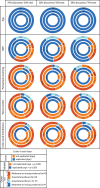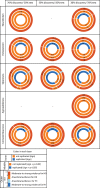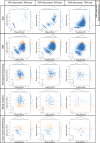Empirical examination of the replicability of associations between brain structure and psychological variables
- PMID: 30864950
- PMCID: PMC6483597
- DOI: 10.7554/eLife.43464
Empirical examination of the replicability of associations between brain structure and psychological variables
Abstract
Linking interindividual differences in psychological phenotype to variations in brain structure is an old dream for psychology and a crucial question for cognitive neurosciences. Yet, replicability of the previously-reported 'structural brain behavior' (SBB)-associations has been questioned, recently. Here, we conducted an empirical investigation, assessing replicability of SBB among heathy adults. For a wide range of psychological measures, the replicability of associations with gray matter volume was assessed. Our results revealed that among healthy individuals 1) finding an association between performance at standard psychological tests and brain morphology is relatively unlikely 2) significant associations, found using an exploratory approach, have overestimated effect sizes and 3) can hardly be replicated in an independent sample. After considering factors such as sample size and comparing our findings with more replicable SBB-associations in a clinical cohort and replicable associations between brain structure and non-psychological phenotype, we discuss the potential causes and consequences of these findings.
Keywords: brain morphometry; human; inter-individual differences; neuroscience; psychometry; replication; structural brain-behavior associations.
© 2019, Kharabian Masouleh et al.
Conflict of interest statement
SK, SE, FH, SG No competing interests declared
Figures







Comment in
-
Assessing reproducibility in association studies.Elife. 2019 Apr 25;8:e46757. doi: 10.7554/eLife.46757. Elife. 2019. PMID: 31021315 Free PMC article.
References
-
- Albers C, Lakens D. When power analyses based on pilot data are biased: inaccurate effect size estimators and follow-up bias. Journal of Experimental Social Psychology. 2018;74:187–195. doi: 10.1016/j.jesp.2017.09.004. - DOI

